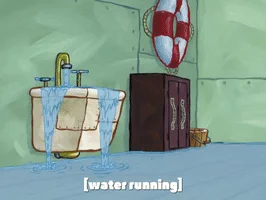
Wednesday, December 18, 2019
Lab 16- Buffers
So in buffers, the acid and conjugate base (or vice versa) work together. The acid helps neutralizes the base, and the conjugate base helps defend against invading acids. This is similar to a lion pride. The lioness works to hunt and take care of the children; the male lion protects the home and can defend against predators. Without both the lioness and the lion working together, the pride wouldn't survive; just like when acid and conjugate bases work together to defend against acids and bases.


Wednesday, October 30, 2019
Lab 13: Real World Example of Equilibrium
SUPPLY AND DEMAND AS A REAL WORLD EXAMPLE OF EQUILIBRIUM
One example of equilibrium that occurs in the real world is the balance between supply and demand in economics. This is an example of equilibrium because manipulating the price or amount of products entered in the market will cause the equilibrium point, the theoretical state of rest where all economic transactions that “should” occur, given the initial state of all relevant economic variables, have taken place, to shift. Because the point is constantly rebalancing based on the market, this shows that the supply and demand markets are dynamic. The reaction is favored towards the demand because if consumers do not purchase a product (demand) there will be no point for the business to provide the good or service.
Here's a graph showing the equilibrium point based on the supply and price (demand) of pizza.
Number of Consumers: The number of consumers or the size of the market has a direct effect on demand. The arrival of new consumers in established market results in an increase in demand for a particular product. However, demand decreases when market shrinks due to factors such as migration or human movement, socioeconomic composition, product substitution or other types of market disruption, and obsolescence, among others.
Consumer Income: For most products or normal goods, there is a direct and positive relationship between the income of a consumer and the amount of the product he or she is willing and able to buy. An increase in income generally results in an increase in demand for these normal goods. However, the demand for some products or so-called inferior goods decreases with an increase in income as consumers. There is an inverse relationship between income and an inferior good. Note that this demand shifter is also related to the income elasticity of demand.
Price of Complements: Note that there are two types of related products: complements and substitutes. Complements are those products bought and consumed together. Examples include milk and cereals or smartphones and mobile accessories. When the price of milk goes up, the demand for cereals might decrease to retain the demanded quantity of milk. In other words, when two products complement each other, there is an inverse relationship between the price of one product and the demand for the other product.
Price of Substitutes: Another type of related product is called substitutes. Unlike complements, substitutes are those products that are not bought or consumed together. Examples include Coke and Pepsi or an Apple iPhone and a Samsung Galaxy smartphone. When the price of Coke goes up, demand for Pepsi might increase as it becomes more attractive or economical for consumers. Hence, when two products are substitutes, there is a positive relationship between the price of one good and the demand for the other good.
Expectations: Expectations involving future market trends as influenced by available market information can affect the demand for a particular product. For example, an announced release date of a new generation of an iPhone would decrease the demand for older and current generations of iPhone. Consumers are essentially waiting for what they expect to happen in the future. Another example is a scheduled oil price hike. Consumers would flock to nearby gas stations to fill up their vehicles while the prices are lower than the expected future prices. Hence, the demand for the current supply of gas increases. In this regard, consumers are responding based on what they expect to happen in the future.
Supply shifters are shifters that affect the supply of products or services. The things that affect supply are the prices of factors of production, returns from alternate activities, technology, seller expectations, natural events, and the number of sellers.
Prices of Factors of Production: A change in the price of labor or some other factor of production will change the cost of producing any given quantity of the good or service. This change in the cost of production will change the quantity that suppliers are willing to offer at any price. An increase in factor prices should decrease the quantity suppliers will offer at any price, shifting the supply curve to the left. A reduction in factor prices increases the quantity suppliers will offer at any price, shifting the supply curve to the right. Suppose coffee growers must pay a higher wage to the workers they hire to harvest coffee or must pay more for fertilizer. Such increases in production cost will cause them to produce a smaller quantity at each price, shifting the supply curve for coffee to the left. A reduction in any of these costs increases supply, shifting the supply curve to the right.
Returns from Alternative Activities: To produce one good or service means forgoing the production of another. The concept of opportunity cost in economics suggests that the value of the activity forgone is the opportunity cost of the activity chosen; this cost should affect supply. For example, one opportunity cost of producing eggs is not selling chickens. An increase in the price people are willing to pay for fresh chicken would make it more profitable to sell chickens and would thus increase the opportunity cost of producing eggs. It would shift the supply curve for eggs to the left, reflecting a decrease in supply.
Technology: A change in technology alters the combinations of inputs or the types of inputs required in the production process. An improvement in technology usually means that fewer and/or less costly inputs are needed. If the cost of production is lower, the profits available at a given price will increase, and producers will produce more. With more produced at every price, the supply curve will shift to the right, meaning an increase in supply. Impressive technological changes have occurred in the computer industry in recent years. Computers are much smaller and are far more powerful than they were only a few years ago—and they are much cheaper to produce. The result has been a huge increase in the supply of computers, shifting the supply curve to the right. While we usually think of technology as enhancing production, declines in production due to problems in technology are also possible. Outlawing the use of certain equipment without pollution-control devices has increased the cost of production for many goods and services, thereby reducing profits available at any price and shifting these supply curves to the left.
Seller Expectations: All supply curves are based in part on seller expectations about future market conditions. Many decisions about production and selling are typically made long before a product is ready for sale. Those decisions necessarily depend on expectations. Changes in seller expectations can have important effects on price and quantity. Consider, for example, the owners of oil deposits. Oil pumped out of the ground and used today will be unavailable in the future. If a change in the international political climate leads many owners to expect that oil prices will rise in the future, they may decide to leave their oil in the ground, planning to sell it later when the price is higher. Thus, there will be a decrease in supply; the supply curve for oil will shift to the left.
Natural Events: Storms, insect infestations, and drought affect agricultural production and thus the supply of agricultural goods. If something destroys a substantial part of an agricultural crop, the supply curve will shift to the left. The terrible cyclone that killed more than 50,000 people in Myanmar in 2008 also destroyed some of the country’s prime rice-growing land. That shifted the supply curve for the rice to the left. If there is an unusually good harvest, the supply curve will shift to the right.
The Number of Sellers: The supply curve for an industry, such as coffee, includes all the sellers in the industry. A change in the number of sellers in an industry changes the quantity available at each price and thus changes supply. An increase in the number of sellers supplying a good or service shifts the supply curve to the right; a reduction in the number of sellers shifts the supply curve to the left. The market for cellular phone service has been affected by an increase in the number of firms offering the service. Over the past decade, new cellular phone companies emerged, shifting the supply curve for cellular phone service to the right.
These stressors change the curves, thus changing the point of equilibrium. This relates the reaction rates as depending on what the shifter is on the curve, the equilibrium point will shift higher or lower in price (quantity demanded) or the supply curve will shift to the left or right depending on how much of a product is produced due to the shifter that caused the movement,
Monday, October 7, 2019
Enthalpy of Reaction
I learned about the relationship between Gibbs Free Energy, entropy, and enthalpy. I did a good job of making sure all of the solids added to the solutions were added completely to get the most accurate reaction possible. I need to improve the way the solution was measured in terms of temperature as the thermometer changed frequently. I also need to work on my patience as I was very impatient in terms of waiting for the temperature to change completely. Working with lab partners made things more entertaining and allowed us to complete the lab faster by multitasking.



Tuesday, September 17, 2019
Lab 8: Titration
In this lab we used titrations. I learned not to trust Mahamat to add small amounts at a time, and to make sure to have all of your reactants. I did a good job of making sure all reactants were measured to an exact (eye level with the meniscus). I need to improve the way the titration was set up, so the liquid does not end up on the side of the flask. I also need to work on my patience as I was very antsy leading up to the equivalence point. Working with lab partners made things more entertaining and allowed us to complete the lab faster by multitasking.








Friday, August 30, 2019
Gravimetric Analysis of Calcium and Hard Water
I learned a lot about calculations and what the "hardness" of water refers to. I did well with making sure all of the precipitate was filtered out of the water by filtering the water through multiple times. I need to work on being more efficient in a lab setting and being more focused. The lab thinking skills I need to improve on are connecting more stoichiometry methods and figuring out how to calculate things on my own. Working with my lab partners was very beneficial as we could check each other's calculations and help when one of us was stuck on a concept.




Friday, August 16, 2019
Green Chemistry: Analysis of a Mixture
I learned how to better calculate the percent yield for reactions in different ways. It was also an incredible way to multitask and be extremely productive. I lit the gas on fire well for the first time and liked working as a team to solve problems. Lab skills wise I need to know how to turn on sinks with them erupting like a geyser. In addition, I need to improve upon my problem-solving skills by thinking through reactions all the way to the end and to know how mistakes will affect it. My lab partners helped me by answering all the stupid questions I had.




Subscribe to:
Comments (Atom)
